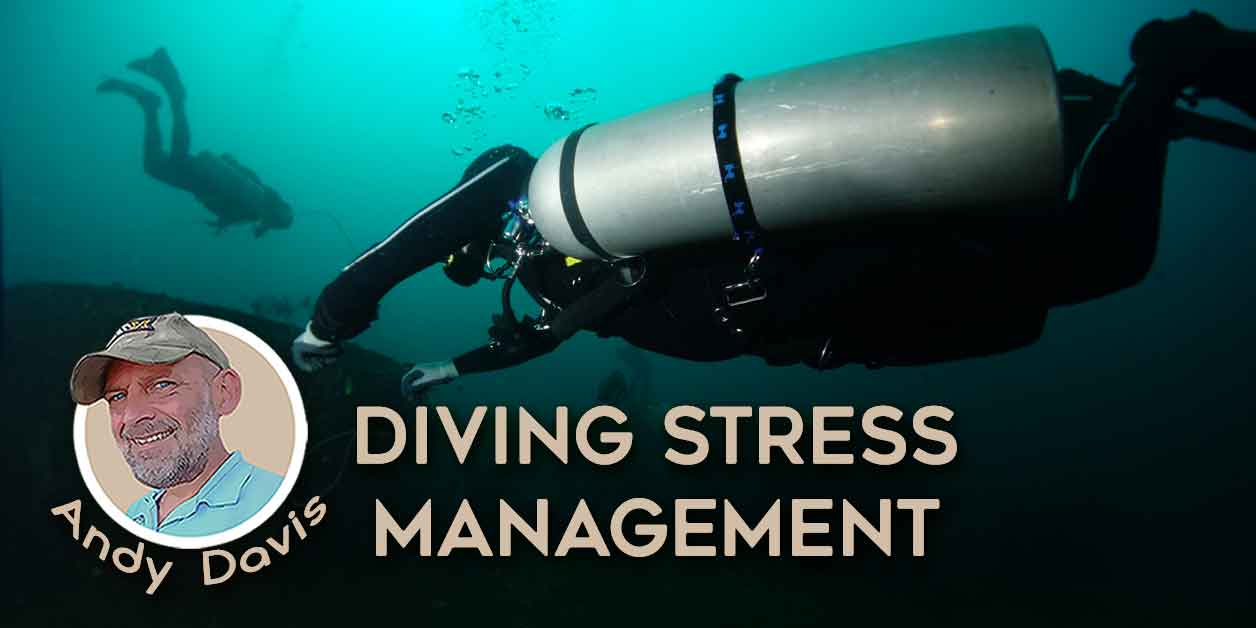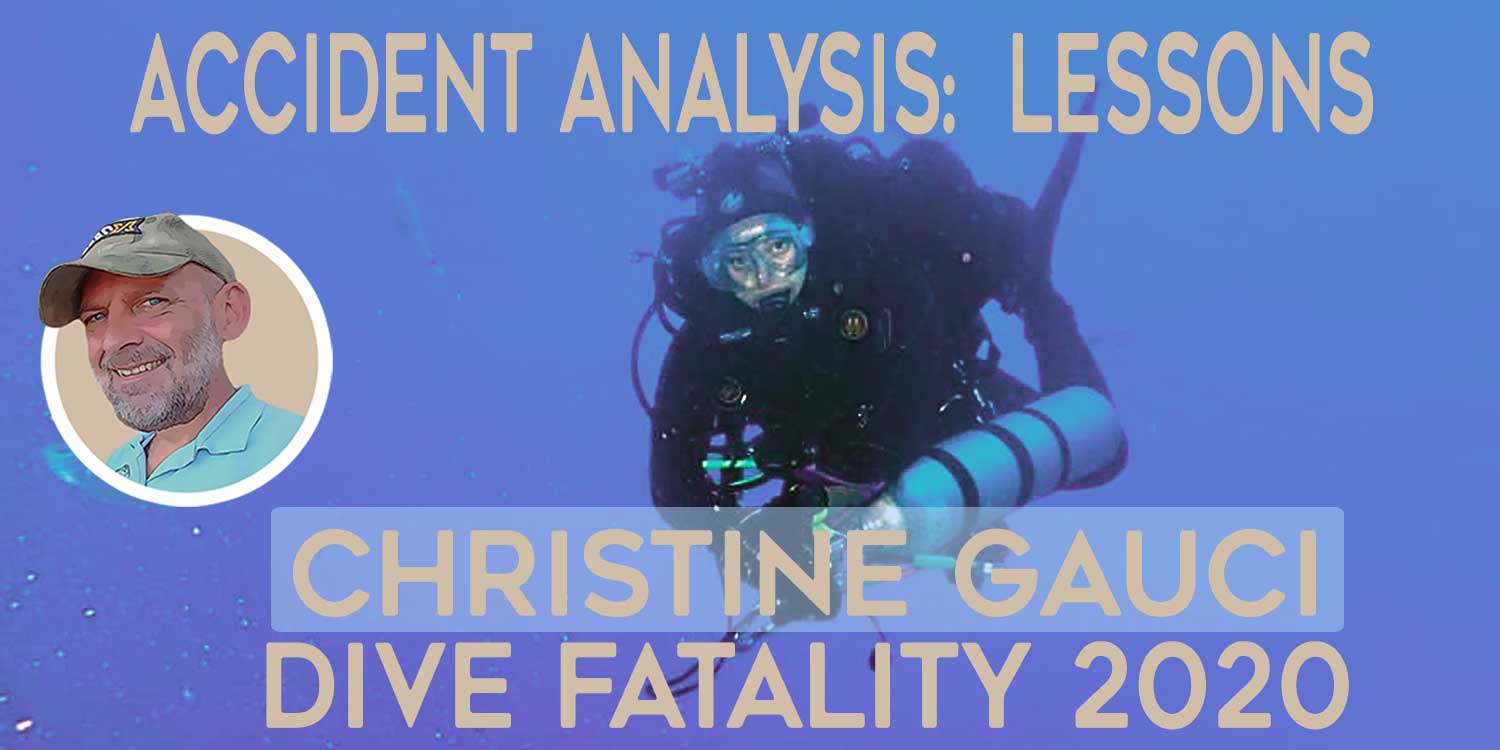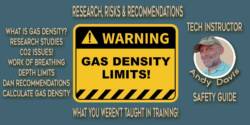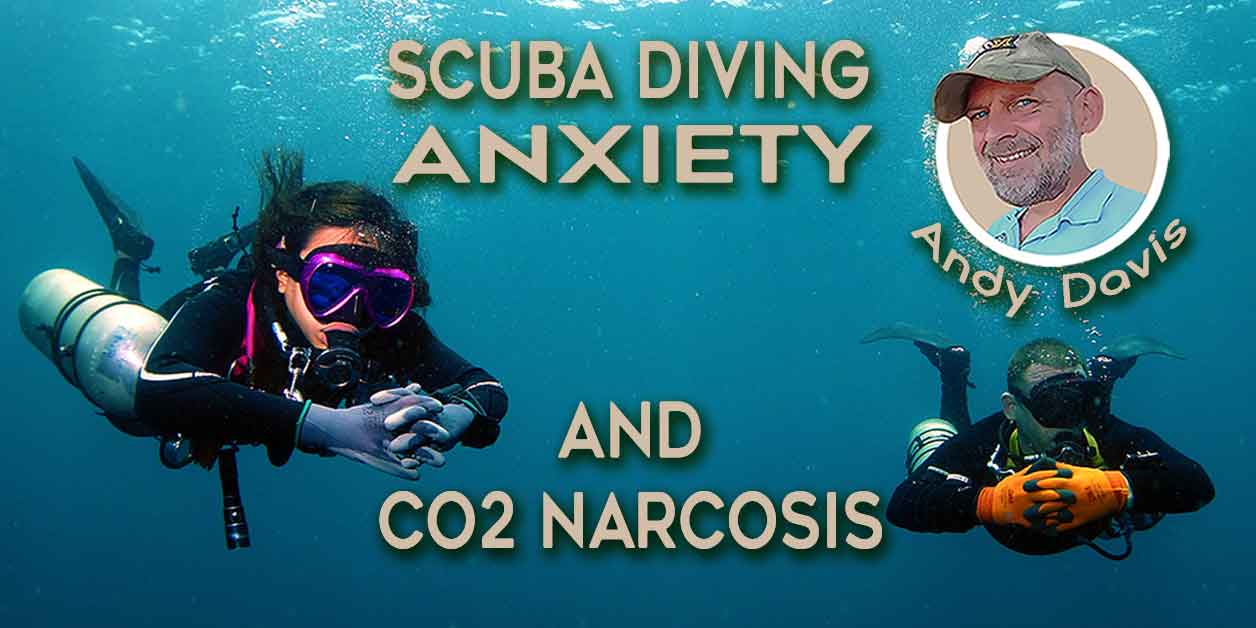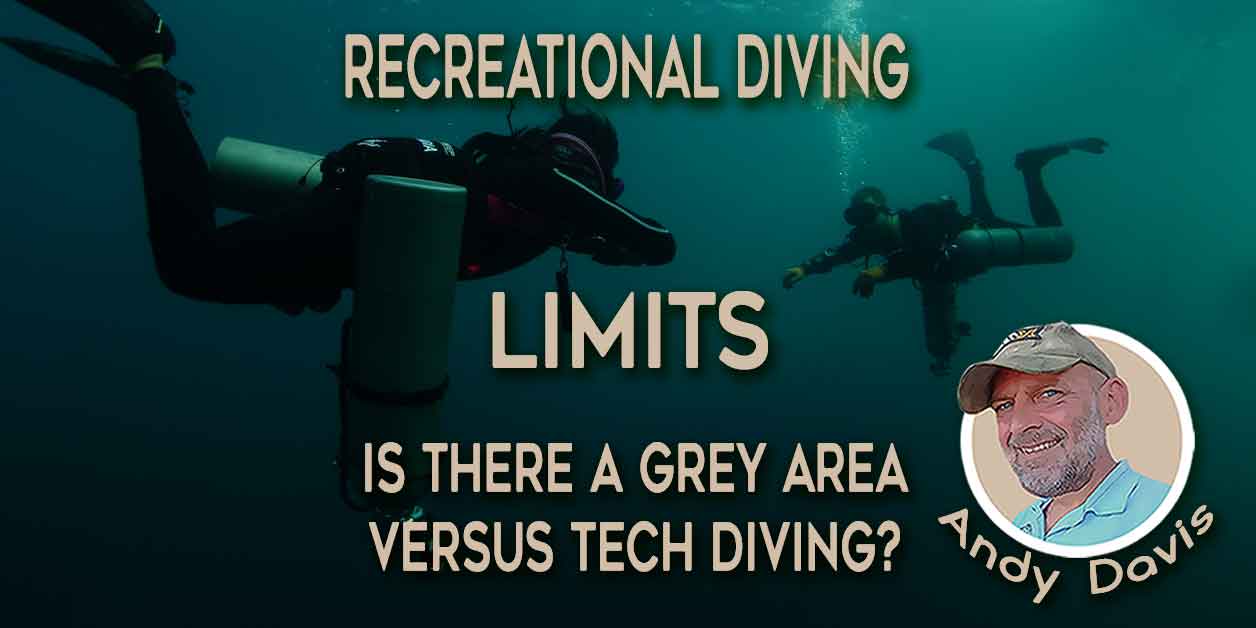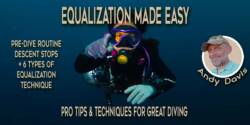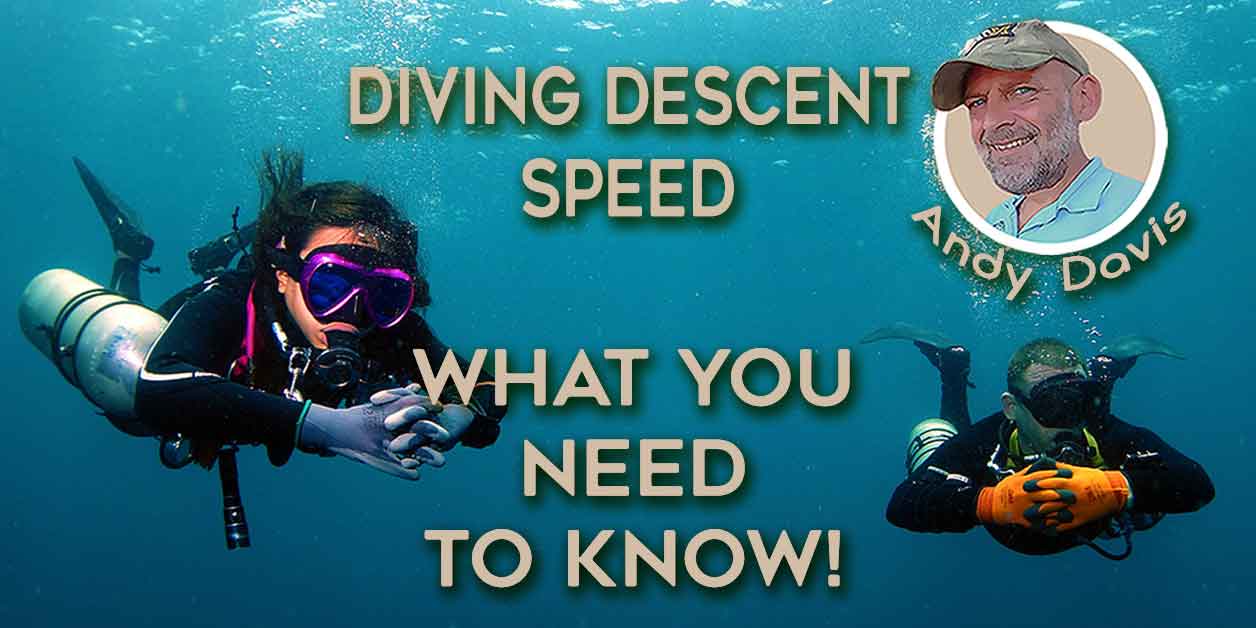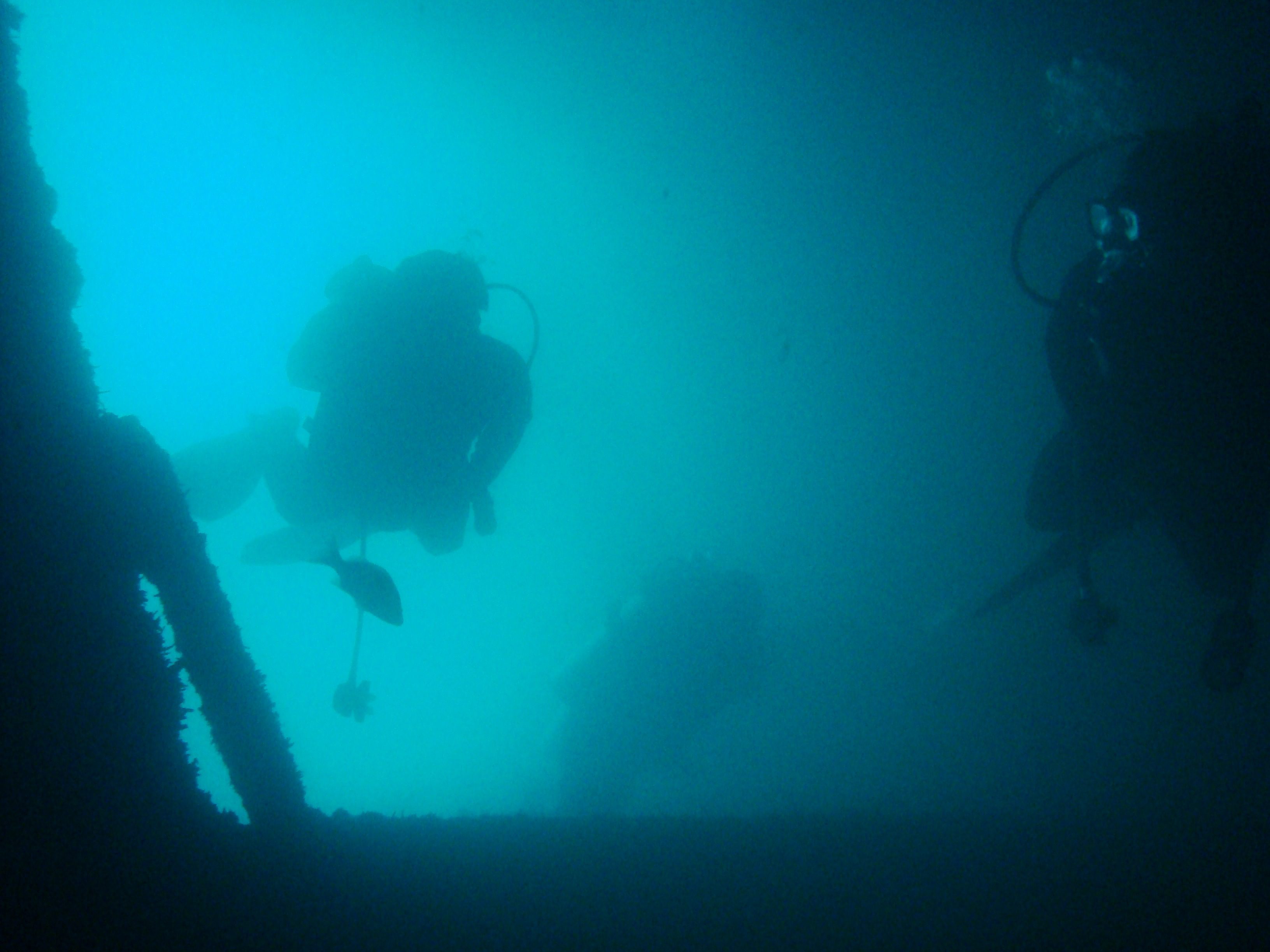The Truth About Diving Emergency SAC Rates: Is Your Gas Planning Accurate?
Many scuba divers underestimate their potential gas consumption during real-life diving emergencies, which can lead to life-threatening situations. In this article, I will demonstrate how research indicates that the human body is capable of reaching staggeringly high emergency SAC rates, and what that potentially means for you in the chaos of a real-life diving crisis.
Emergency SAC Rates
In an emergency, a diver’s Surface Air Consumption (SAC) rate can increase drastically due to elevated stress, exertion, and gas density. Prudent divers plan for that scenario in their pre-dive gas management planning. However, diving risk mitigation strategies often fail to accurately account for the shocking surge in gas consumption that occurs when a diver panics or is under extreme stress.
In my experience as a full-time tech instructor for nearly 2 decades, I observe most divers assuming that their emergency SAC rate will be twice as high as their regular gas consumption rate. That’ll typically be in the region of 30-40 liters per minute. The more conservative divers may presume an emergency SAC three times higher than normal; 45-60 liters per minute. Is that really accurate for a highly stressed, or extremely exerted diver?
Similarly, I observe some divers diligently measuring an ‘exerted’ SAC rate. This typically involves finning hard for 10 minutes and calculating the consumption. Does that relatively moderate level of exertion truly represent a worst-case scenario?
The time it takes to reach the surface, or the next gas switch, is critical, and divers must ensure they realistically carry enough gas to sustain these emergency scenarios.
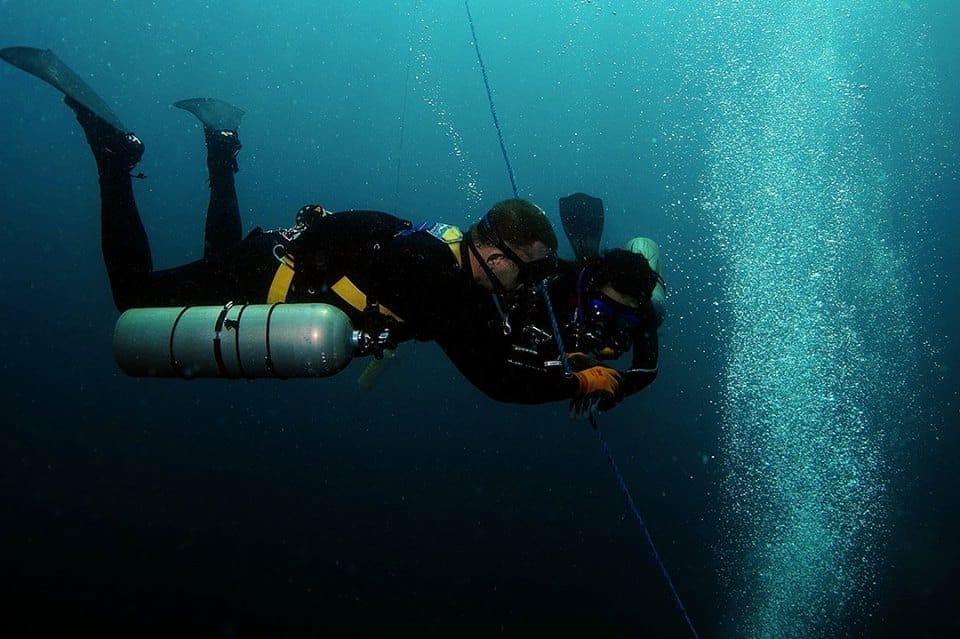
This article owes a lot to the UK HSE study “The Provision of Breathing Gas to Divers in Emergency Situations” by Nick Bailey. It is very worth the time to read it!
Diver Anxiety and Dive Emergency Panic
Most divers presume they’ll never panic underwater. Yet it happens all too regularly, even to divers with significant experience and to those holding instructor and technical diving certifications.
Divers can succumb to panic for a variety of reasons, and this plays a significant role in underestimating gas consumption rates during emergencies. Several stressors can trigger an increase in emergency SAC rates, including cold, hypoxia, CO2 retention, physical pain, and the stress associated with emergencies perceived as life-threatening.
Stress causes a severe elevation in both breathing depth (tidal volume) and frequency. Full-blown panic can exaggerate that air consumption to truly astounding levels.
Diving itself is inherently stressful, as it exposes individuals to a range of physical, environmental, physiological, and psychological challenges. These include high-pressure environments, fluctuating temperatures, the thermal conductivity of water, poor visibility, and the potential toxicity of breathing gases.
Psychological Stressors in Diving
Psychological stressors—such as heightened anxiety or sensory overload—further contribute to the diver stress. Studies have shown that nearly 50% of divers have experienced anxiety, panic, or phobic responses while underwater (Bachrach & Egstrom, 1987; Morgan, 1985). Under acute stress, divers often struggle to manage both the demands of their environment and the psychophysiological effects of their stress responses (Imber, 2018).
‘Negative Automatic Threat-relevant thoughts‘, also known as NATs, (Colvard, 2000) can be triggered by diving stressors like;
- Gear problems
- Persistent difficulty equalizing
- Physical fatigue
- Inhaled water
- Motion sickness
- The fear of dangerous marine life
These instinctive and intrusive thoughts lead to anxiety, which manifests in both emotional (fear, helplessness, lack of control) and physiological (rapid heartbeat, shortness of breath, hyperventilation) responses. Panic can arise before a dive even begins and may intensify during the dive, especially in emergencies like a gas supply failure or regulator malfunction.
Recent studies, such as St Leger Dowse et al. (2019), found that many recreational divers report experiencing depressive and anxiety symptoms before or during a dive. This is not surprising, as recreational diving often involves short training programs and places a high level of self-responsibility on divers.
Without sufficient risk awareness or preparedness, divers are more susceptible to stress and panic, increasing the likelihood of accidents (Lucrezi et al., 2018). These factors underscore the need for divers to better understand their gas consumption under stressful and emergency conditions.
CO2 Tolerance and the Control of Panic
Carbon dioxide (CO2) plays a significant role in diver panic, and it is often underestimated when considering gas consumption rates during emergencies.
Studies show that individuals with panic disorder are more sensitive to the anxiogenic effects of CO2 inhalation, which triggers a range of respiratory abnormalities.
For divers, CO2 retention (hypercapnia) can explain unexpected panic attacks underwater. At greater depths, the density of air and nitrox increases, which dramatically reduces the body’s ability to expel CO2 effectively.
This buildup of CO2 in the body can lead to symptoms such as shortness of breath, dizziness, and an overwhelming sense of panic, further increasing the diver’s breathing rate and gas consumption.
The Divers Alert Network (DAN) recommends a maximum gas density of 5.2g/L to minimize dangerous CO2 retention. However, this limit is reached at just 31m (102ft) when breathing air!
As gas density increases with depth, the ability to remove CO2 diminishes, making divers more prone to CO2-induced panic. This ultimately leads to iemergency SAC rates which may be far higher than planned or expected.
Physiology and Psychology of Emergency SAC Rates
Understanding the physiological and psychological factors that affect emergency SAC rates is critical in explaining why divers often underestimate their gas needs, especially in emergencies.
Research into human performance, particularly the maximal SAC rates achieved by athletes, provides valuable insight into the upper limits of air consumption. While few divers are as cardiovascularly fit as elite athletes, they may be subjected to comparable exertion levels during a dive emergency.
Physiological Factors in Diving Gas Consumption
Several physiological factors influence how a diver consumes gas in emergencies:
- Position in the Water: Whether a diver is in an upright or prone position affects breathing ease. This is due to the hydrostatic pressure on the lungs relative to the position of the regulator second stage. The diver’s trim orientation can either aid (if horizontal) or hinder (if vertical) efficient gas exchange.
- Breathing Patterns: As workload increases, so does breathing rate. Research (ISO 16976-19) indicates that breathing shifts from a sinusoidal (rhythmic and smooth) to a trapezoidal (irregular in pace and depth) pattern under stress. Diving equipment, tested based on sinusoidal breathing, may not cope with trapezoidal breathing during high-demand situations, potentially limiting gas supply when it’s most needed.
- Gas Density: As depth increases, gas density rises, making breathing more difficult and leading to increased gas consumption. Using helium in the breathing mix (trimix) can help reduce this effect, but it’s not always available or practical.
- Thermal Protection: Wearing a wetsuit or drysuit can impose restrictions on the thoracic region, making breathing more difficult and increasing the effort required to inhale.
- Hydrostatic and Inertial Pressures: The thoracic cavity experiences both hydrostatic pressure (related to depth) and inertia from immersion, which can further impede breathing efficiency.
- Equipment Fit: The BCD harness can constrict the chest, limiting lung expansion and full breaths, which in turn increases the effort required to breathe.
Current Guidelines for Emergency SAC Rates
Current guidelines across each diving industry provide varying gas consumption rates for divers in emergency situations. However, research and real-time data suggest that actual consumption rates during emergencies can far exceed those specified in these guidelines.
As a result, divers may have less gas available than they require in a critical situation, which could lead to life-threatening consequences.
Both the recreational and commercial diving industries typically use breathing rates suitable for normal or light workloads when planning gas consumption. This fails to account for the significantly higher rates needed during periods of heavy exertion, acute stress, or panic.
This is problematic, as real-life diving emergencies invariably involve intense physical and psychological stress, resulting in dramatically increased SAC rates.
Gas reserve planning should ensure that a diver has enough time to reach safety in an emergency. However, carrying enough gas to meet maximum consumption rates may be impractical. This makes a risk-based assessment of gas requirements crucial for emergency planning.
Gas Management For Scuba Divers

The comprehensive, illustrated, metric guide to advanced gas planning and management for safer scuba diving. Only $9!
60 Pages. Printable PDF format. Fully Illustrated.
Typical SAC Rates For Divers
At rest, the human basal breathing rate is generally between 13 and 17 breaths per minute, with a tidal volume of 500 to 600 ml. This equates to a SAC rate of approximately 6.5 to 10.2 liters per minute. However, less experienced divers typically demonstrate SAC rates above 20 liters per minute.
During physical exertion, as occurs in emergencies, the body’s production of metabolic CO2 increases, causing the breathing rate to rise. The depth of the dive further affects breathing rate, as gas density increases with depth, making it more difficult to expel CO2 when working hard.
Physical and psychological factors, such as training level, competence, and the perceived severity of a threat, also influence the diver’s response.
Therefore, emergency SAC rates should be based on scientific research, reflecting realistic breathing demands in high-stress situations. This highlights the need for greater standardization, incorporating emergency gas consumption rates grounded in real-world data to ensure divers are better informed to conduct accurate risk management.
Dive Training Agency Emergency SAC Rates
Recreational and Technical dive training agencies have different approaches to advising on emergency SAC rates.
- PADI, SSI and IANTD
- Emergency SAC rate (l/min): None provided
- Technical divers calculate an elevated SAC rate based on mild exertion.
- Sub Aqua Association (SAA)
- Emergency SAC rate (l/min):
- Normal 25 l/min
- Stress/emergency 30 l/min
- Trainee +20%
- Emergency SAC rate (l/min):
- British Sub Aqua Club (BSAC)
- Emergency SAC rate (l/min):
- 25 l/min in training literature
- <50 l/min in the BSAC safe diving book
- Emergency SAC rate (l/min):
Other Guidance on Emergency SAC Rates
There are numerous studies demonstrating that far higher SAC rates are possible, compared to the advice given by dive training agencies. These figures show the potential for emergency SAC rates to rise beyond 100 liters per minute when under extreme psychological or physiological stress.
National Oceanic and Atmospheric Administration (NOAA)
- Maximal consumption rate:
- 22.5 l/min light work,
- 40 l/min moderate work,
- 62.5 l/min moderate heavy,
- 75 l/min heavy
- 90 l/min extremely heavy
Reference: National Oceanic and Atmospheric Administration Diving Manual fourth edition 2001
Study: International-Level Athletes
- Maximal consumption rate: 150.73 to 162.96 l/min
Reference: Body Composition and Peak Aerobic Power in International Level Hungarian Athletes; J. Meszaros, Y Soliman, M Othman, J Mohasci. Facta Universitatis Vol 1 No 5, 1998 page 24.
ISO/TS Standards
- Maximal consumption rate:
- Male 116 l/min
- Female 101 l/min
Reference: DD ISO/TS 16976-1:2007 Respiratory protective devices — human factors —Part 1: Metabolic rates and respiratory flow rates page 11.
Study: Minute Volumes and Inspiratory Flow Rates
- Consumption rate l/min 93 ± 20 l/min
- Tested on a treadmill at 5 km/h (20%) whilst wearing a protective respirator
Reference: INGVAR HOLMéR, KALEV KUKLANE, CHUANSI GAO, Minute Volumes and Inspiratory Flow Rates During Exhaustive Treadmill Walking Using Respirators, The Annals of Occupational Hygiene, Volume 51, Issue 3, April 2007, Pages 327–335,
Dive Computer SAC Rate Data
Data collected from air-integrated (AI) dive computers has been collected during studies and reveals a wide range of SAC rates. The highest recorded was a staggering 195 liters per minute! The higher rates recorded far exceed what most divers would ever plan for.
What Should Your Emergency SAC Rates Be?
You have seen that research shows maximum SAC rates of up to 110 l/min are a possibility. This worst-case scenario is significantly higher than what is typically planned for as a diving contingency.
I suggest considering that your current emergency SAC rate estimates may be inadequate for real-life high-stress situations. While planning for an emergency SAC rate of 110 l/min may be ideal based on the research, this would have practical limitations, such as requiring additional, or larger, cylinders. Obviously, the weight and bulk of additional, or larger, cylinders pose negative factors to dive safety.
A more practical approach might involve planning for a general emergency SAC rate between 50 l/min and 75 l/min. The specific rate used should be determined by a thorough risk assessment of the dive, accounting for factors like depth, gas density, the potential of narcosis, workload, environmental conditions, and one’s psychology and stress levels on a given day.
About The Author

Andy Davis is a RAID, PADI TecRec, ANDI, BSAC, and SSI-qualified independent technical diving instructor who specializes in teaching sidemount, trimix, and advanced wreck diving courses.
Currently residing in Subic Bay, Philippines; he has amassed more than 10,000 open-circuit and CCR dives over three decades of challenging diving across the globe.
Andy has published numerous diving magazine articles and designed advanced certification courses for several dive training agencies, He regularly tests and reviews new dive gear for scuba equipment manufacturers. Andy is currently writing a series of advanced diving books and creating a range of tech diving clothing and accessories.
Prior to becoming a professional technical diving educator in 2006, Andy was a commissioned officer in the Royal Air Force and has served in Iraq, Afghanistan, Belize, and Cyprus.
In 2023, Andy was named in the “Who’s Who of Sidemount” list by GUE InDepth Magazine.
Purchase my exclusive diving ebooks!
Emergency SAC Rates – Background Reading
- The provision of breathing gas to divers in emergency situations. 2015. Nick Bailey, Health and Safety Laboratory, for the UK Health and Safety Executive (HSE).
- Psychophysiological stress response in SCUBA divers: The contribution of negative automatic thoughts and negative emotions. Zec, Mirela & Anticevic, Vesna & Lusic Kalcina, Linda & Valic, Zoran & Bozic, Josko. (2022). Current Psychology. 42. 10.1007/s12144-022-02900-x.
- Textbook of Work Physiology Physiological bases of Exercise third edition 1986 Per-Olof Åstrand Kaare Rodahl ISBN 0-07-100114-X
- The Physiology and Medicine of Diving 4th Edition seventh printing 1999 Peter Bennett and David Elliott ISBN 0-7020-1589-X
- Stress and Performance in Diving 1987 Arthur J Bachrach Glen H Egstrom ISBN 0-941332-06- 3 NOAA Diving manual 4th edition 2001 ISBN 0-941332-70-5
- Proceedings of the third symposium Underwater Physiology edited by C J Lambertsen 1967 Library of Congress Card Catalog Number 66-28164 Physiology of Respiration second edition 1974 Julius H Comroe Library of Congress Card Catalog Number 73-86837
- Topics in Environmental Physiology and Medicine Carbon Dioxide and Metabolic Regulations Nahas/Schaefer 1974 ISBN 0-387-06627-6 Life Support System Design, Diving and Hyperbaric Applications M L Nuckols,A J Sarich, W C Tucker 1996 ISBN 0-536-59616-6
- Pulmonary gas exchange in diving. R.E. Moon, A.D. Cherry, B.W. Stolp, and E.M. Camporesi. J Appl Physiol 106: Nov 2008 pages 668-677.
- Components of the pressure required to breathe dense gases. H.D. Van Liew. Undersea Biomedical Research Vol.14, No 3, May 1987 pages 263-276.
- Minute Volumes and Inspiratory Flow Rates During Exhaustive Treadmill Walking Using Respirators. INGVAR HOLMéR, KALEV KUKLANE, CHUANSI GAO. The Annals of Occupational Hygiene, Volume 51, Issue 3, April 2007, Pages 327–335, https://doi.org/10.1093/annhyg/mem004
- Air Flow measurements on Human Subjects with and without respiratory resistance at several work rates. L. Silverman, G. Lee, T. Plotkin, L. Amory Sawyers, A. R. Yancey. 1951 A.M.A. archives of industrial hygiene and occupational medicine pages 461-478.
- Physiological consequences of a high work of breathing during heavy exercise in Humans. J.A. Guenette, A.W. Sheel. Journal of Science and Medicine in Sport (2007) 10 pages 342 – 350.
- Comprehensive performance limits for divers’ underwater breathing gear: Consequences of adopting diver-focused limits. D.E. Warkander. TA 05-12 NEDU TR07-02 January 2007
- Simple exponential regression model to describe the relation between minute ventilation and oxygen uptake during incremental exercise. Reizo Baba, Emiko Mori, Nobuo Tauchi and Masami Nagashima. Nagoya J. Med.Sci. 65. pages95~102, 2002 Development of Comprehensive
- Performance Standards for Underwater Breathing Apparatus. D.E. Warkander, C.E.G. Lungdren. Naval Sea Systems Command Deep Submergence Biomedical Development Program 2000
- Physiological responses to head out of water immersion in water at 11ATA. M. Matsuda, H. Nakayama, H. Arita, J.F. Morlock, J. Claybaugh, R.M.Smith and S.K.Hong. Undersea Biomedical Research Vol.5, No. 1, March 1978 pages 37-52.
- Limiting factors for maximum oxygen uptake and determinants of endurance performance. D.R. Bassett, JR. and E.T. Howley. Medicine & Science in Sport & Exercise Sept 1999 pages 70-84.
- Respiratory rate can be modulated by long-loop muscular reflexes, a possible factor in involuntary cessation of apnea. C. Balestra, M. Levenez, P. Lafère, B. Dachy, M. Ezquer and P. Germonpré. Diving and Hyperbaric medicine Volume 41 No.1 March 2011 pages 3-8.
- Relative effects of submersion and increased pressure on respiratory mechanics, work, and energy cost of breathing. H.E. Held, D.R. Pendergast.J. Appl. Physiol 114: 2013 pages 578-591.
- Respiratory demand during rigorous physical work in a chemical protective ensemble. J.W. Kaufman, S. Hastings. (2005) JOEH: 2: pages 98-110.
- Peak Inspiratory Flows of Adults exercising at light, moderate and heavy workloads. N.J. Anderson, P.E. Cassidy, L.L. Janssen, D. R. Dengel. Journal of the International society for Respiratory Protection, Vol 23 pages 53-63.
- Interperation of inhalation airflow measurement for respirator design and testing. L.L. Janssen, N.J. Anderson, P.E. Cassidy, R.A. Weber and T.J. Nelson. Journal of international Society fro Respiratory Protection, Vol 22 Fall/Winter 2005 pages 122-141.
- The maximum breathing capacity test. J.L. D’Silva, D. Mendel. Thorax (1950), 5 pages 325- 332.
- The Unconscious Diver: Respiratory Control and other Contributing Factors. The Twenty Fifth Undersea Medical Society Workshop. Transcripts from Regulation of Breathing. Chairman J.A. Dempsey. Undersea and Hyperbaric Medical Society. 1982 pages 41-61.
- Minute volumes and inspiratory flow rates during exhaustive treadmill walking using respirators. I. Holmer, K. Kuklane and C Gao. Ann. Occup. Hyg. Vol. 51, No. 3 March 2007, pages 327-335.
- The effect of body position on inspiratory airflow in divers. M. L. Krauza, C. E.G. Lundgren UHM 2007, Vol. 34, No. 6 May 2007
Originally posted 2024-10-14 18:24:17.






